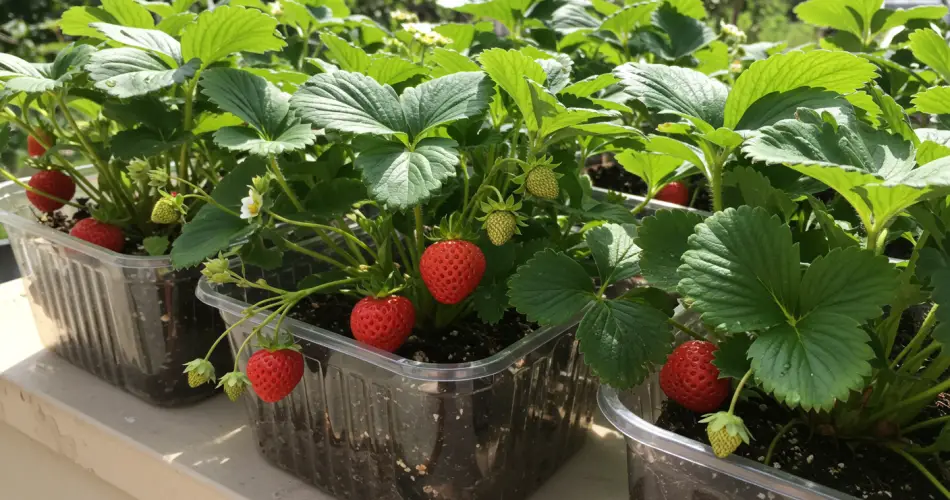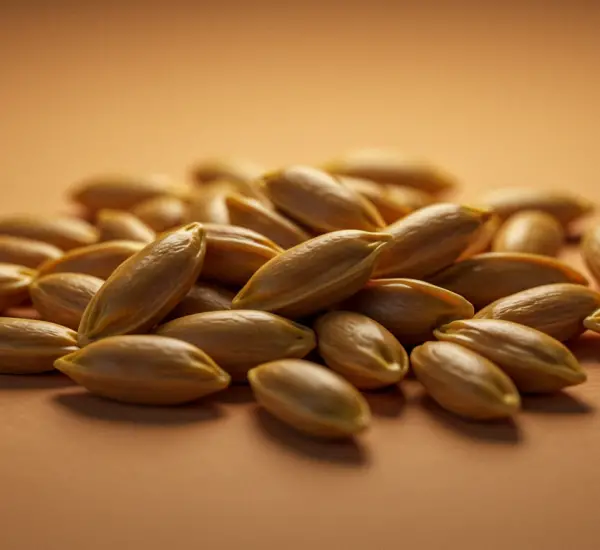If you’ve ever dreamed of harvesting fresh, juicy strawberries from your own home but weren’t sure where to begin, you’re in luck. Strawberries are one of the easiest fruits to grow indoors or on a balcony, and with just a few simple steps and consistent care, you’ll be rewarded with sweet, flavorful berries that taste far superior to store-bought ones.
Unlike supermarket strawberries, which are often harvested while still slightly green to withstand transportation, homegrown strawberries can be picked at the perfect moment—fully ripe, bursting with natural sugars, and packed with nutrients. The difference in taste is remarkable: the more natural sugars a strawberry develops, the stronger and sweeter its flavor will be.
This guide will walk you through everything you need to know about growing strawberries at home, from choosing the right variety to creating a DIY planter with simple materials.
Why Homegrown Strawberries Are Better
The strawberries you buy at the grocery store are bred and harvested for durability, not taste. They’re picked before ripening so they won’t spoil during transport. Unfortunately, this interrupts their natural sugar production, which leaves them less sweet and flavorful.
By growing strawberries at home, you can harvest them at the peak of ripeness. This not only ensures the best flavor but also allows the fruit to retain its maximum nutritional value. Strawberries are an excellent source of antioxidants—particularly anthocyanins, the compounds responsible for their bright red color. Antioxidants help protect cells from damage caused by free radicals, which can reduce the risk of cardiovascular disease and certain cancers.
Having strawberries on hand also means you’ll enjoy fresh, organic produce at zero cost once your plants are established.
Choosing the Best Variety
One of the first steps in growing strawberries is selecting the variety. There are several types to choose from, and they differ primarily in how often they produce fruit:
-
June-bearing strawberries: Produce one large harvest per year, usually in late spring or early summer.
-
Ever-bearing strawberries: Yield two or more harvests throughout the year—often in early summer and again in fall.
-
Day-neutral strawberries: Can produce fruit continuously throughout the growing season, as long as conditions are favorable.
Care for each variety is largely the same, so choose the type that suits your preferences and harvesting goals.
For indoor or balcony cultivation, wild strawberries are an excellent option. These berries are very small but intensely flavorful, far more aromatic than commercial varieties. They’re also highly productive and ideal for places with limited sunlight, since they adapt well to indoor growing conditions. Wild strawberries are rarely available in supermarkets due to their delicate nature and short shelf life, which makes growing them at home even more rewarding.
Light and Climate Requirements
Strawberries are sun-loving plants that thrive with at least seven hours of direct sunlight daily. While they can tolerate partial shade, the amount of fruit they produce will be significantly lower.
Temperature also plays a role in their growth. Ideally, strawberries prefer cool nights (10–13°C / 50–55°F) and mild daytime temperatures (18–22°C / 64–72°F). These conditions encourage steady growth, flowering, and fruit development.
Fortunately, strawberries are adaptable and can grow in a wide range of climates, making them a perfect choice for home gardening.
Growing Strawberries in DIY Containers
You don’t need a garden to grow strawberries. With a little creativity, you can create hanging planters using simple, recycled materials like plastic bottles. Here’s how:
-
Prepare the containers
Choose large plastic bottles and cut them in half with a sharp cutter. Use both the top and bottom sections. With a heated nail or screwdriver, puncture drainage holes around the sides of each container. -
Create hanging planters
Tie a sturdy cord or rope to the sides of the bottles so you can hang them in a sunny spot on your balcony, patio, or even indoors near a bright window. -
Start the seedlings
Place strawberry seedlings in small plastic bags or wrap them in plastic film. Add a bit of soil along with a slice of banana (including the peel) to provide natural nutrients. Seal the plastic lightly to retain moisture. -
Transplant to the containers
After about 15 days, you’ll notice the seedlings have developed fine white roots. At this point, transplant each one into the prepared containers filled with soil. Position the seedling in the center and gently press the soil around its base. -
Caring for your plants
Water the plants regularly to keep the soil moist but not soggy. Strawberries are sensitive to overwatering, so ensure proper drainage to prevent root rot. Hanging containers are especially helpful for this, as they prevent waterlogging.
From Seedling to Fruit
With proper care, your strawberry plants will establish quickly. After about two months, you’ll see them growing stronger, producing healthy leaves and runners. By the time three and a half months have passed, your plants should already be producing ripe, juicy strawberries ready to harvest.
One of the greatest joys of growing strawberries at home is that you’ll always have access to fresh, chemical-free fruit. And once your plants mature, they’ll continue producing for years with minimal upkeep.
Final Tips for Success
-
Harvest regularly: Pick ripe strawberries as soon as they’re ready. This encourages the plant to produce more fruit.
-
Fertilize naturally: Use organic compost or banana peels for extra nutrients instead of chemical fertilizers.
-
Rotate plants: After a few years, replant strawberries in fresh soil to avoid disease buildup.
-
Enjoy them fresh: Homegrown strawberries are best eaten the same day they’re picked, when their sweetness and aroma are at their peak.
The Bottom Line
Growing strawberries at home is easy, cost-effective, and incredibly rewarding. With just a few recycled bottles, some soil, and a sunny spot, you can create your own mini strawberry garden and enjoy delicious, organic fruit all season long.
Whether you choose wild varieties for their intense flavor or ever-bearing ones for continuous harvests, the process is simple, and the payoff is unmatched. Within a few short months, you’ll be savoring the sweetest strawberries you’ve ever tasted—grown right in your own home.



